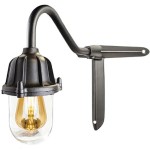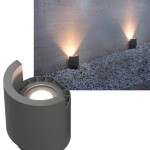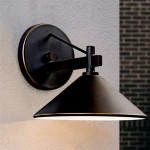How To Remove Old Paint From Outdoor Furniture
Outdoor furniture, exposed to the elements, often suffers from peeling, cracking, and fading paint. Removing this old paint is a crucial step in restoring its beauty and extending its lifespan. Several methods are available, each with its own set of advantages and disadvantages. The choice of method depends on the type of furniture material (wood, metal, or plastic), the type of paint, the age of the paint, and the desired level of restoration.
Before beginning any paint removal project, safety precautions are paramount. Working outdoors provides adequate ventilation, however, wearing appropriate personal protective equipment (PPE) is essential. This includes safety glasses to protect the eyes from flying debris and chemical splashes, gloves resistant to the chemicals being used, and a respirator or dust mask, especially when sanding or using chemical strippers. Proper clothing, such as long sleeves and pants, protects the skin. A drop cloth or tarp underneath the furniture protects the surrounding area from paint chips and stripping agents.
Preparing the Work Area and Furniture
Thorough preparation is critical for efficient and safe paint removal. Start by moving the furniture to a well-ventilated outdoor location, away from children and pets. This minimizes the risk of inhaling harmful fumes and prevents accidental contact with stripping agents or paint debris. Lay down a drop cloth or tarp to protect the ground from paint chips, dust, and chemical spills. If the furniture is heavily soiled with dirt, mildew, or algae, clean it with a mild detergent and water solution, followed by a thorough rinse. Allow the furniture to dry completely before commencing the paint removal process.
Inspect the furniture for any loose or damaged parts, such as screws, bolts, or joints. Tighten or repair these components before proceeding. Disassemble the furniture as much as possible to allow for easier access to all painted surfaces. Remove any cushions, fabric, or hardware that could be damaged by the paint removal process. For intricate designs or hard-to-reach areas, consider using specialized tools like detail brushes or small scrapers.
If the furniture has multiple layers of paint, consider testing a small, inconspicuous area with a chosen paint removal method before applying it to the entire piece. This allows for assessing the method's effectiveness and identifying any potential damage to the underlying material. This will also provide an opportunity to ensure the substrate material will not be damaged by the process.
Methods for Removing Old Paint
Several methods effectively remove old paint from outdoor furniture. The most common include chemical stripping, sanding, heat removal, and media blasting. Each method offers distinct advantages and disadvantages depending on the type of furniture material and the condition of the old paint.
Chemical Stripping: Chemical paint strippers soften the paint's bond with the substrate, making it easier to scrape away. These strippers are available in liquid, gel, and paste forms. Gel and paste formulations are particularly useful for vertical surfaces, as they cling better and prevent dripping. Chemical strippers are effective for removing multiple layers of paint and are generally suitable for intricate designs where sanding would be difficult. However, chemical strippers can be hazardous and require careful handling. Always wear appropriate PPE, including gloves, eye protection, and a respirator, and work in a well-ventilated area. Follow the manufacturer's instructions carefully for application and dwell time. After applying the stripper, allow it to sit for the recommended time, then use a scraper to remove the softened paint. Neutralize the surface with a recommended solution after stripping to ensure proper adhesion of future paint or finishes. Properly dispose of the used stripper and paint residue according to local regulations.
Sanding: Sanding involves using abrasive materials to physically remove the paint. It is a versatile method suitable for wood, metal, and some plastic furniture. Sanding is generally less hazardous than chemical stripping, but it can create a significant amount of dust. Always wear a dust mask or respirator to protect your lungs. Start with a coarser grit sandpaper (e.g., 80-grit) to remove the bulk of the paint, then gradually move to finer grits (e.g., 120-grit, 220-grit) to smooth the surface. Use a sanding block or orbital sander for larger, flat surfaces. For intricate areas, hand sanding with sandpaper wrapped around a small block or tool is preferable. Be careful not to apply excessive pressure, as this can damage the underlying material. Sanding is effective for removing relatively thin layers of paint and for preparing the surface for repainting. After sanding, thoroughly clean the furniture to remove all sanding dust.
Heat Removal: Heat guns or infrared paint strippers soften the paint, allowing it to be scraped away more easily. This method is best suited for wood and metal furniture. Heat guns should be used with caution to avoid overheating the paint and potentially igniting it, especially on wood. Always keep the heat gun moving and avoid focusing on one spot for too long. Infrared paint strippers offer a safer alternative, as they heat the paint more evenly and at a lower temperature, reducing the risk of fire. Wear heat-resistant gloves and eye protection when using heat removal methods. Scrape the softened paint away while it is still warm. After heat removal, sand the surface lightly to remove any remaining residue and prepare it for refinishing. Work in a well-ventilated area as fumes can be produced.
Media Blasting: Media blasting, also known as abrasive blasting, involves using compressed air to propel abrasive materials, such as sand, glass beads, or plastic media, against the painted surface. This method is highly effective for removing paint from metal furniture and is sometimes used on wood, although it can be more aggressive. Media blasting should only be performed by experienced individuals or professionals, as it requires specialized equipment and techniques. Appropriate PPE, including a full-face respirator and protective clothing, is essential. Media blasting can create a significant amount of dust and noise, so it should be done in a controlled environment, such as a blasting cabinet or booth. The choice of media depends on the type of furniture material and the desired level of aggressiveness. After media blasting, thoroughly clean the furniture to remove all abrasive residue.
Specific Considerations for Different Furniture Materials
The choice of paint removal method largely depends on the material of the outdoor furniture. Wood, metal, and plastic each require different approaches to avoid damage and achieve the best results.
Wood Furniture: Wood is a relatively soft material that can be easily damaged by aggressive paint removal methods. Chemical stripping, sanding, and heat removal are all viable options, but caution is necessary. When using chemical strippers, choose a formulation specifically designed for wood and avoid prolonged exposure to prevent the stripper from penetrating too deeply into the wood. Sanding should be done with progressively finer grits of sandpaper, avoiding excessive pressure. Heat guns should be used carefully to prevent scorching or warping the wood. Media blasting is generally not recommended for wood furniture unless performed by a professional with experience in using gentler media and lower pressures. After removing the paint, thoroughly clean the wood and allow it to dry completely before refinishing. Consider applying a wood preservative or sealer to protect the wood from moisture and decay.
Metal Furniture: Metal is generally more durable than wood and can withstand more aggressive paint removal methods. Chemical stripping, sanding, heat removal, and media blasting are all suitable options. Chemical strippers are effective for removing multiple layers of paint, including rust. Sanding can be done with power tools, such as orbital sanders or angle grinders, to speed up the process. Heat guns can be used to soften the paint, making it easier to scrape away. Media blasting is highly effective for removing paint and rust from metal furniture, but it is important to choose the appropriate media and pressure to avoid damaging the metal. After removing the paint, thoroughly clean the metal and apply a rust-inhibiting primer before refinishing. Consider powder coating as a durable and weather-resistant finish for metal furniture.
Plastic Furniture: Plastic furniture is the most sensitive to harsh chemicals and high temperatures. Chemical stripping is generally not recommended, as many strippers can dissolve or warp plastic. Sanding is a viable option, but it should be done carefully with fine-grit sandpaper to avoid scratching the surface. Heat guns should be avoided, as they can easily melt or distort plastic. The best option for removing paint from plastic furniture is often a combination of gentle scraping and sanding. Start by using a plastic scraper to remove any loose or peeling paint. Then, use fine-grit sandpaper to smooth the surface and remove any remaining paint residue. After removing the paint, thoroughly clean the plastic and apply a primer specifically designed for plastic before refinishing. Consider using spray paint formulated for plastic for a durable and even finish.
Post-Removal Surface Preparation
After removing the old paint, proper surface preparation is crucial for ensuring the new paint or finish adheres properly and provides long-lasting protection. This typically involves cleaning, sanding, and priming the surface.
Cleaning: Thoroughly clean the furniture to remove any remaining paint residue, dust, dirt, or grease. Use a mild detergent and water solution, followed by a thorough rinse with clean water. For stubborn residue, consider using a specialized cleaner designed for the specific furniture material. Allow the furniture to dry completely before proceeding to the next step.
Sanding: Even if sanding was used to remove the paint, a light sanding with fine-grit sandpaper (e.g., 220-grit) is recommended to create a smooth and uniform surface for the new finish. This helps to improve adhesion and ensures a professional-looking result. Sand in the direction of the wood grain, if applicable, and avoid applying excessive pressure. After sanding, thoroughly clean the furniture to remove all sanding dust.
Priming: Applying a primer is essential for most types of outdoor furniture, especially wood and metal. Primer helps to seal the surface, promote adhesion of the topcoat, and provide a barrier against moisture and corrosion. Choose a primer specifically designed for the furniture material and the type of finish being used. Apply the primer in thin, even coats, following the manufacturer's instructions. Allow the primer to dry completely before applying the topcoat. For metal furniture, use a rust-inhibiting primer to prevent corrosion.

How To Remove Paint From Wood Finishes Direct

3 Ways To Remove Paint From Old Wood Furniture Pros Cons Everyday House

How To Remove Paint From Metal Diyer S Guide Bob Vila

How To Re Wooden Outdoor Furniture The Honeycomb Home

How To Refinish Aluminium Patio Furniture Ehow

How To Clean And Repaint Wrought Iron Patio Furniture White Lilac Farmhouse

How To Paint An Outdoor Metal Chair

How To Spray Paint Metal Outdoor Furniture Last A Long Time H2obungalow

How To Paint Outdoor Wood Furniture And Make It Last For Years

How To Spray Paint Metal Outdoor Furniture Last A Long Time H2obungalow
Related Posts







